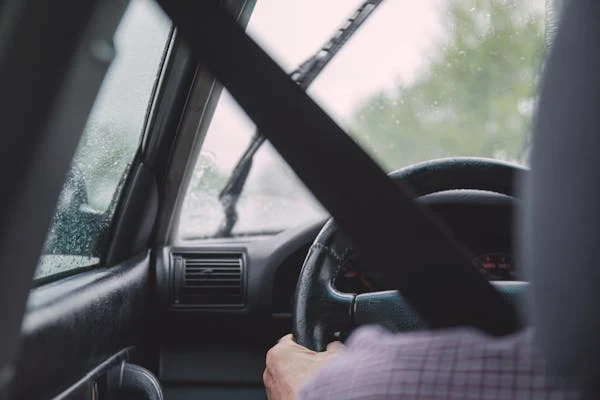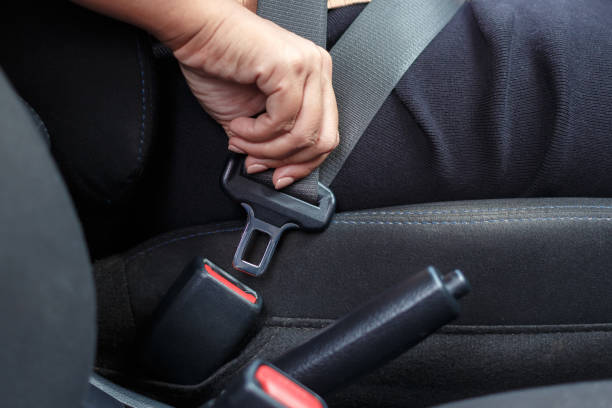Safety Measures to Avoid Accidents: A Details Guide

The truth is nobody can predict accidents, they just happen all of a sudden on any one and in some cases anywhere also sometimes at anytime. While there are certain precautions that drivers can take to reduce the likelihood of a crash and drive safely. The following are some important safety tips which will ensure that the drivers stay safe while driving, keep themselves and others as well in better health by preventing accidents.
Adhere to Speed Limits
We have speed limits in place to help make our roads safer for all road users. When our cars go at less than the maximum speed, it means we will be able to keep control of them and react properly when something unexpected happens as swiftly as possible in events like accidents. Speeding endangers other drivers as well as pedestrians and cyclists. Speed limits would save lives and make our roads safer so if we all stuck to them, even a bit more flexibly applied, it sure as anything should reduce the amount you have spent making your motor cover letters fruitless.
Avoid Distractions
Accidents Due To Distractions These include texting, talking on a cell phone, eating and drinking while driving, changing the radio station or CD among others. Engagement in these activities diverts drivers’ focus from the road and decreases a driver’s reaction time to unexpected traffic conditions. Drivers should remain focused and mindful of everyone on the road; keep mobile devices hidden away or use hands-free communication. The risk of falling victim to distracted driving related accidents drops significantly when you remain vigilant and aware.
Keeping a Safe Following Distance
A safe following distance can be the difference between a rear-end or not. Basically, you want to be three seconds behind someone. Rebound distance is enough time to react and stop safely if the vehicle in front brakes sharply. More space could give you extra time to react in bad weather or heavy traffic and help prevent accidents.
Use Seat Belts Properly
Seat belts rank as one of the most successful safety features in cars. This measures along with other things stops occupants of the cars to be expelled during a collision thus preventing serious injury. Seat belts should be worn by all passengers in every seating position Moreover, always make sure to put on seat belts and children are buckled into suitable car seats or booster chairs as that can raise more safety If driver and passengers use a seat belt correctly, they can reduce the risk of injury fairly significantly in case of an accident.
Follow Traffic Signals and Signs
Traffic signals and signs are intended to direct traffic appropriately in order provide the safe passage of all road users. If you choose to ignore or disobey these signals and signs, this can cause accidents which are heightened at the intersections. All drivers should always be aware of when operating a vehicle is to come to a complete stop at all red lights and signs, yield the right-of-way where necessary, obey speed limits as well as any other regulatory traffic sign. Drivers can help to make sure this happens by observing traffic signals and signs.
Don’t Drink and Drive
Driving drunk or on drugs is super not cool and also illegal as shit. Drivers that are impaired will have slower reaction times, affected judgment and less coordination which makes it more likely they may be involved in a car wreck. If you plan to drink, make a ride-sharing or public transportation arrangements. Also refrain from driving when under the influence of prescription or over-the-counter medications that can affect your ability to drive safely. Drives should take responsible steps to stop impaired driving caused accidents
Scheduled Car Maintenance
Safe driving is important which keeps your drive error-free. Routine inspections, like tire pressure, brakes, monitoring light levels and fluid checks can help keep an eye on your car in the long run. Safe brakes, tires and lights are necessary for vehicle control and identifying hazards, especially under emergency situations. The more often you take your car for servicing, the less likely it is to have mechanical failures that could cause accidents.
Be Aware of the Weather
Poor weather, rain, snow, fog or ice dramatically affect driving safety. Be prepared to drive even slower, as poor visibility will make finding the road difficult and slippery footing means stopping a bit longer. Under these conditions, slow down and increase your following distance with other vehicles; use headlights to improve visibility. If the conditions are extreme that day, consider waiting until another time. Avoiding accidents, if you drive carefully with respect to weather condition.
Practice Defensive Driving
Anticipating the possibility of danger and doing something about it is a sign that you have just learned how to drive defensively. This means being alert to your surroundings, anticipating the actions of other motorists and available respond when a crisis arises. Defensive drivers err on the side of caution, have patience, and do not engage in aggressive driving (they never tailgate, weave through traffic or swear at other motorists). When you drive defensively, it lessens the chances of accidents happening and therefore creates a safer road for everyone.
Stay Educated and Informed
All drivers are encouraged to continue their driver education and remain knowledgeable about the best practices behind-the-wheel. There are things here like taking a defensive driving course or attending safety workshops that can help and which you should investigate further. Moreover, educating young drivers on how to drive safely and the significance of having responsible behavior behind the wheel can help it assured that safety practices are imbibed for a lifetime. So the more people know, through being educated and informed – which they are when I inform them – the better travel-related decisions motorists can make; the less risk of having an accident.
As a Final Consideration
However, understanding that safety is key to avoiding accidents and driving with as much responsibility as possible. Drivers can greatly reduce their risk of accidents if they maintain speed regulations, do not drive distractedly or under the influence, keep a safe distance behind other cars on the road and use seat belts. Along with the factors above, careful vehicle maintenance, knowledge of weather conditions, defensive driving practices and general awareness for safe driving all add to a safer experience on the road. All of these precautions contribute to the overall safety and pleasure on the road for all drivers, passengers, and others sharing paths with vehicles.












Post Comment